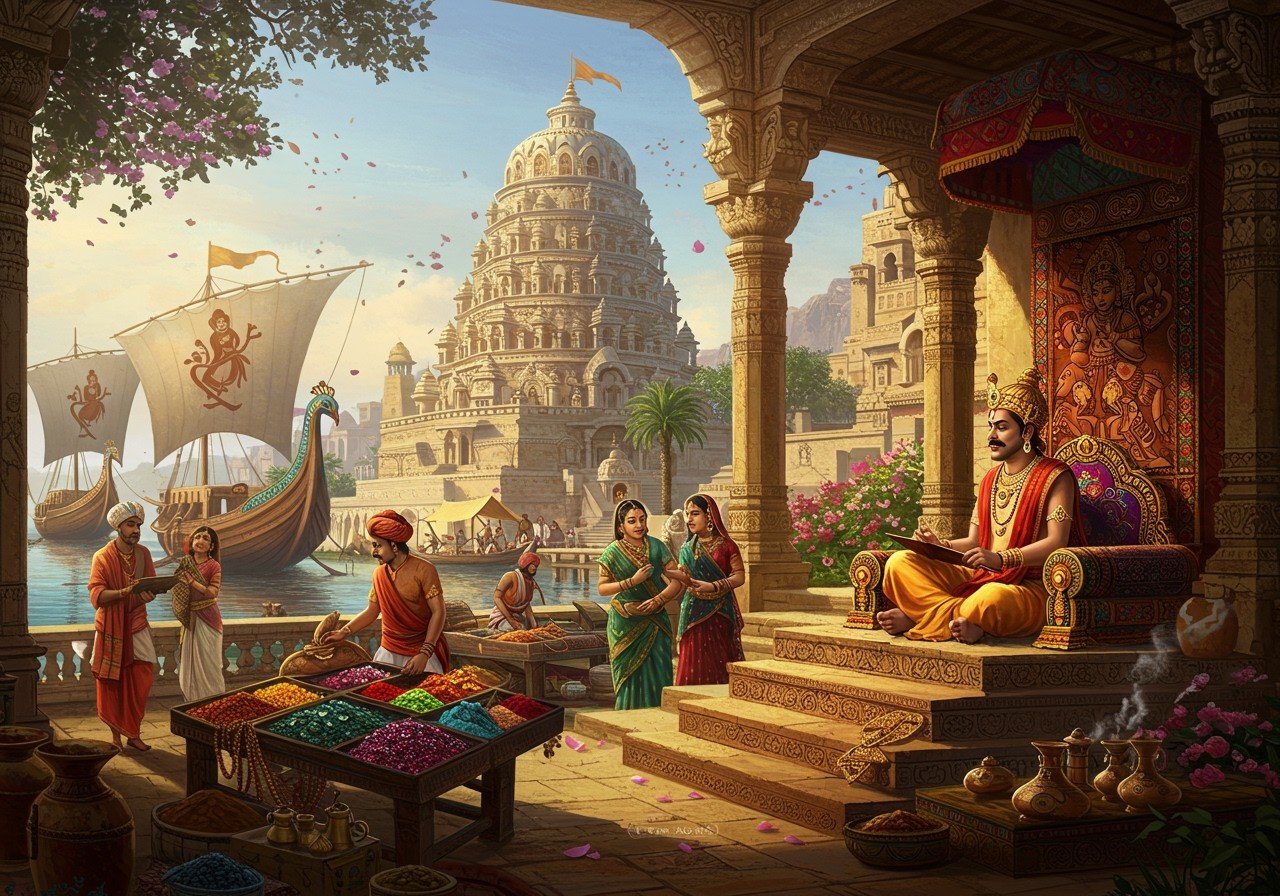
The Satavahana dynasty, also known as the Andhras, a prominent ancient Indian empire, reigned from the late 2nd century BCE to the early 3rd century CE. They left an indelible mark on India’s cultural, economic, and administrative landscape. This dynasty, succeeding the Mauryans in Central India, governed a vast territory encompassing Andhra, Maharashtra, Karnataka, and Madhya Pradesh. Their reign significantly shaped the political, cultural, and economic dynamics of South and Central India. Notable rulers like Gautamiputra Satakarni and Vasishthiputra Pulumavi contributed significantly to the dynasty’s rich heritage, evidenced by various forms of literature, inscriptions, and coins. This exploration delves into the daily life, social structures, economic activities, and administrative systems of the remarkable Satavahana era.
Satavahana Society: A Tapestry of Tradition and Culture
Satavahana society was a complex tapestry woven with intricate social structures and rich cultural practices. The varna system, a hierarchical social order, defined roles and responsibilities within the society. Women played a vital role, actively contributing to art, literature, and even governance, showcasing their influence and agency.
Religious Practices:
- Hinduism and Buddhism flourished as the dominant religions, shaping the spiritual landscape of the era. The Satavahanas demonstrated religious tolerance, allowing various faiths to coexist harmoniously, fostering a pluralistic society.
- This period witnessed the construction of magnificent temples and stupas, reflecting the architectural prowess and religious fervor of the time. These structures served as centers of worship, community gatherings, and artistic expression, enriching the cultural fabric of the Satavahana kingdom. Explore Lord Narasimha temples across India.
Family and Kinship:
- Family formed the cornerstone of social life, emphasizing strong kinship bonds and shared traditions. Rituals and customs, passed down through generations, were integral to daily life, reinforcing social cohesion and cultural continuity.
- These rituals and customs often involved specific puja items and ceremonies, reflecting the importance of religious practices in family life. Poojn.in offers a wide variety of puja items to support your family’s traditions.
Education:
- Buddhist monasteries served as important centers of learning, disseminating knowledge and fostering intellectual growth. These institutions, along with other educational centers, played a crucial role in preserving and transmitting knowledge across generations.
- The emphasis on education contributed to the flourishing of literature, philosophy, and scientific inquiry during the Satavahana era. Discover resources for mindfulness and meditation at Poojn.in.
Satavahana Economy: A Foundation of Trade and Agriculture
The Satavahana economy thrived on a robust foundation of trade, agriculture, and craftsmanship. Agriculture served as the backbone, with diverse crops sustaining the population and fueling economic activity. Their economic prosperity was further bolstered by extensive trade networks.
Trade Networks:
- Domestic and international trade flourished, connecting the Satavahana kingdom with distant lands and fostering economic exchange. This vibrant trade contributed significantly to the kingdom’s wealth and prosperity, facilitating the exchange of goods, ideas, and cultural influences.
- The Satavahanas established trade routes and maintained diplomatic relations with various regions, including the Roman Empire. Discover historical artifacts and religious items at Poojn.in.
Satavahana Administration: Structure and Governance
The Satavahana administrative system was renowned for its efficiency and organization, ensuring stability and fostering the growth of the empire.
Governance Structure:
- A hierarchical structure, with the king at its apex, formed the basis of Satavahana governance. Ministers, local officials, and other administrative personnel played crucial roles in managing the affairs of the kingdom, ensuring effective governance and the implementation of royal decrees.
- This structured administration contributed to the stability and prosperity of the Satavahana empire, enabling efficient tax collection, infrastructure development, and the maintenance of law and order. Learn more about governance structures.
Daily Life in the Satavahana Dynasty
Daily life in the Satavahana dynasty was as diverse and vibrant as the empire itself. From the grandeur of the nobility to the simplicity of commoners, life during this period reflected a rich tapestry of experiences.
Social Classes and Occupations:
The society was stratified into various social classes, each with its own distinct lifestyle and occupations. The nobility enjoyed a life of luxury, residing in opulent homes and having access to fine goods. Commoners, including farmers, artisans, and merchants, led simpler lives but played essential roles in the economic and social fabric of the kingdom.
FAQs about Life in the Satavahana Dynasty
What was the structure of Satavahana dynasty administration? The Satavahana dynasty employed a centralized administrative system, with the king holding ultimate authority. Various officials, including ministers (Amatyas), executive officers (Mahamatras), and military commanders (Senapatis), played key roles in governing the kingdom and implementing royal policies.


